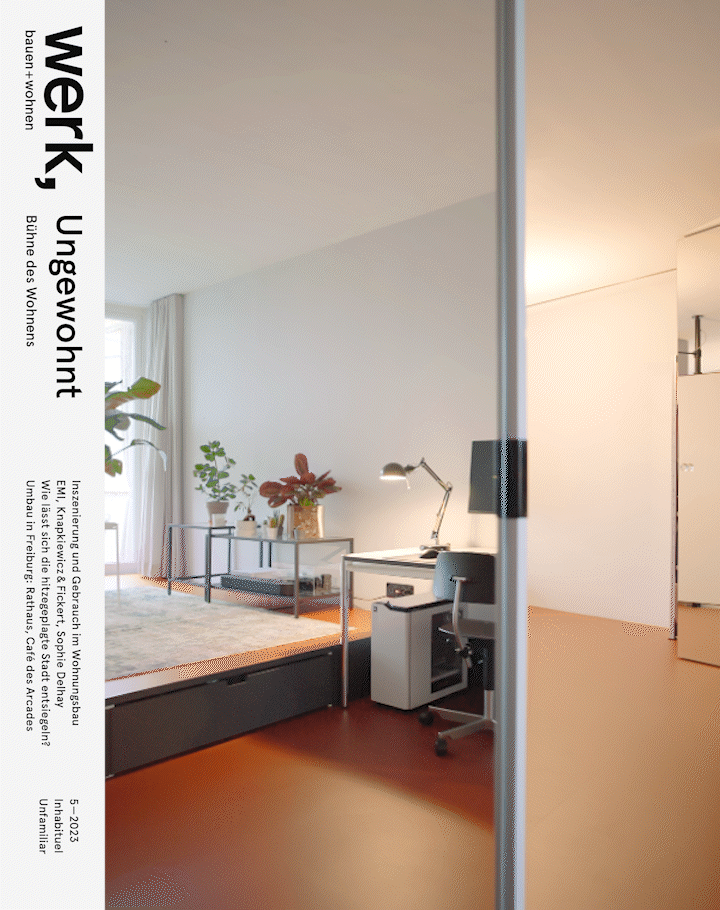werk, bauen + wohnen 5 – 2023

Housing as Play
The projects in the theme section of this issue go further than housing as it is usually discussed. Because they point beyond profitability, typologies, or the functionality of use. And, essentially, they do this for the most part using architectural means, not to say through architectural space. So, not entirely incidentally, this issue provides three different answers as to what architectural space can be.
Initially, in conceiving this issue we allowed ourselves to be guided by a feeling: namely that all the examples should, in some form or other, follow a theatrical understanding of space — in order in this way to connect directly to the issue “Depth” (wbw 3–2022). So, for instance, the Vogelsang development in Winterthur embodies almost literally a stagy, baroque architectural concept, the houssing design is understood as commedia and its architecture as a stage set. In augmenting this reference to the theatre, the stages of Edelaar Mosayebi Inderbitzin or Sophie Delhay function in a modernist sense as “machines” that perform housing. In the apartment building by EMI in Zurich the metaphor is direct; in Delhay’s cellular floor plans in her French housing developments it functions in a more abstract way because the architect specifies a rulebased rigid “kit” of rooms or, indeed, stages. On these stages life pulsates. Small wonder, for us the great discovery in this issue was the joint literary reference: Georges Perec. EMI and Delhay refer explicitly to his instructions for play.
And housing itself? Through their specificity the projects gathered here demonstrate in an exemplary way that the time of the great housing stories is past. In their place today there are postmodern narratives. For architecture to be valid, it must create singularities, unique, unmistakeable — even for housing cooperatives. Thus, the end of modern mass housing construction also has its good side, as mass produces too much CO₂. Precisely now, when the construction industry is rediscovering itself un der the banners of the circular economy and
recycling, housing construction should start with solutions for a resource-efficient good life, not with recipes for more growth. — Tibor Joanelly, Roland Züger